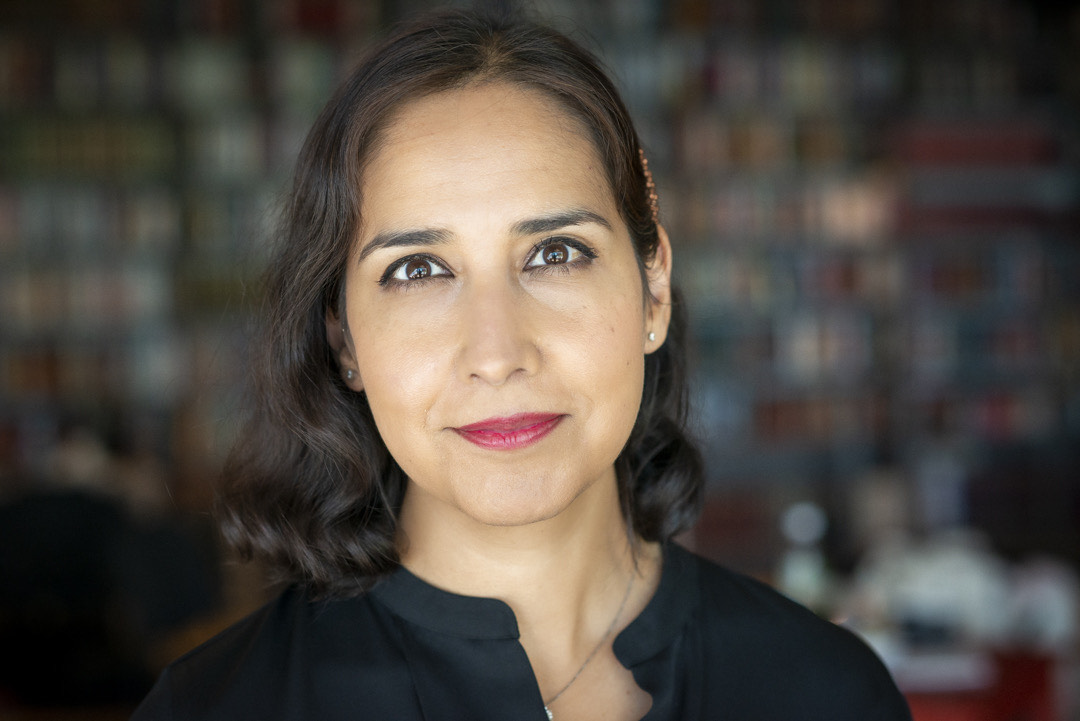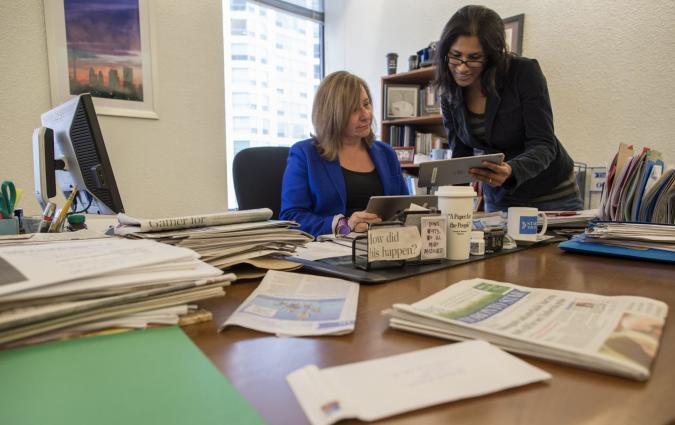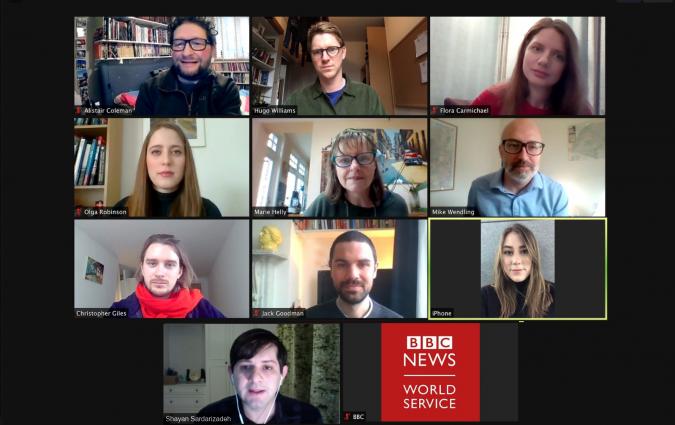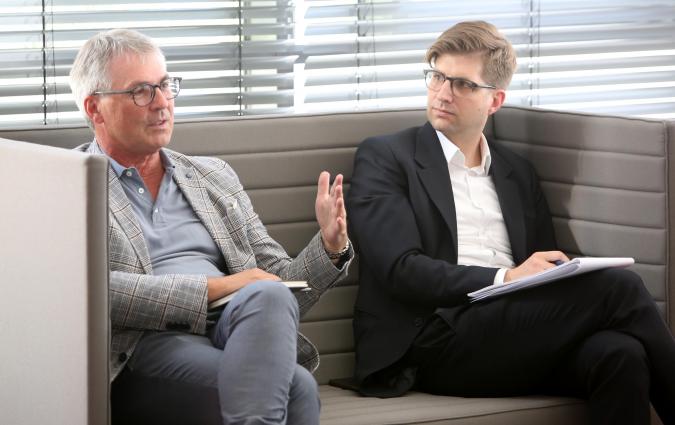In this piece
Under-represented and overexposed: Norway has a news problem

Research by Norwegian fellow Shazia Majid (above) finds ethnic minority women’s voices are simultaneously missing and over-used.
The first generation of ethnic minority women from Asia and Africa were missing from Norwegian history pages for 50 years. The press played a major role in their invisibility: they failed in writing “the first rough draft of history”.
Now, to a large extent, history is repeating itself.
Last year, I conducted a quantitative analysis to determine the representation of ethnic minority women in Norwegian news by studying a representative sample of 3,956 news items published in Norway’s two leading newspapers, Verdens Gang (VG) and Aftenposten in 2018.
The results show ethnic minority women were present in less than 1% of news coverage, despite making up 4% of the total population of Norway. Put another way: this means a woman of colour in Norway is four times less likely to see someone like herself in print than she would in real life.
The paradox of our times, however, is that while ethnic minority women in general are grossly under-represented in Norwegian media coverage, a handful of them are hugely overexposed.
In both cases, women tend to get the short end of the stick.
The history
Ethnic minority women were hardly written about in the newspapers in the 1970s. That was the time when they were immigrating to Norway (a predominantly white, homogenous country) by their hundreds.They came mostly from countries like Pakistan, India, Morocco and Turkey.
Norway was at the dawn of its status as the most gender equal, gender progressive country in the world. The sudden presence of non-white women was such an anomaly at the time that it should have been an obvious news story – but it was a story almost no one chose to tell.
Instead, they told the stories of “fremmedarbeidere”. The immigrants who were known as “guest workers” in other European countries were called “alien workers” in Norway. These were the ethnic minority men.
The Norwegian press documented their struggles, and rightfully so. From discrimination and exploitation in the workplace, hate crimes, the horrible conditions they were living under, and not least the ongoing heated political and public debate about how to stop the influx of the immigrants from “alien cultures”.
Hundreds of stories were written, dozens every week. The men were photographed, filmed, got to speak – they had a name. They were seen and heard and documented.
Women were not.
The research
In 2019, when I was writing my book about this topic Ut av skyggene (Stepping out of shadows), I promised myself I would document how the Norwegian press is covering this group of women today.
That’s what I did during my time at the Reuters Institute. And the results surprised even me: less than 1% (0.92%) of the news was about or had quoted an ethnic minority woman.
According to the sample, they were under-represented by a factor of four compared to their presence in the general population, and by a factor of eight when only women are counted.
Ethnic minority women were also less likely to be in the news compared to ethnic minority men (1.5 times less likely) and women in general (1.6 times less likely).
By far the most common way for an ethnic minority woman to be seen and heard in the Norwegian traditional news – at least according to my study – was by submitting her writing to the opinion pages. External opinion pieces account for 33.3% of the coverage given to ethnic minority women in VG and Aftenposten in 2018.
In other words, ethnic minority women are themselves putting in the effort to be visible in the Norwegian media. The newspapers themselves, VG and Aftenposten, do not have to do much beyond possibly editing and proofreading their work.
Before publication, I shared my findings with editors at VG and Aftenposten. Both responded comprehensively and encouragingly. Capturing the essence of the challenge and the opportunity, VG news editor Tora Bakke Håndlykken said: “When a group of people are under-represented, as in this case, we risk missing out on important voices, sources and stories, making our news coverage less interesting, and in worse case, biased.” She said VG was committed to continuing to elevate a wide range of ethnic voices on a wider range of topics.
Aftenposten news editor Tone Tveøy Strøm-Gundersen said the under-representation of ethnic minority women was an indication that there were areas of reporting they had not been able to cover. “That damages the trust in journalism,” she added.
Strøm-Gundersen added that she does not agree that featuring young ethnic minority women on opinion pages was the easy way out for newsrooms seeking representative diversity: “It is the same as with women resources in general: in many cases it’s a lot of work over time to get those opinions in," she said.
The interviews
In my paper, available for download below, I spoke to some of the handful of women who get the full glare of attention in Norwegian media. When ethnic minority women are invisible to the extent they are here, those who break through the sound barrier get disproportionately amplified.
The media don’t light them a candle; they turn their floodlights on them. These women become household names, camouflaging how seldom ethnic minority women actually make it to the news pages.
It is worrying that Norway’s leading newspapers are failing in their duty of making ethnic minority women a natural part of their coverage. The stereotyping is alarming. The tropes of “victim-heroine” and the successful “heroine” live on.
All of this, however, is fixable. Both VG and Aftenposten need to publish more human interest and lifestyle stories featuring ethnic minorities. Also, the use of ethnic minority women in illustrations and images will assist in normalising these women.
Although the solutions may seem obvious, they require leadership, clear strategies and groundwork. The newsrooms need to make a conscious decision and invest money and time.




